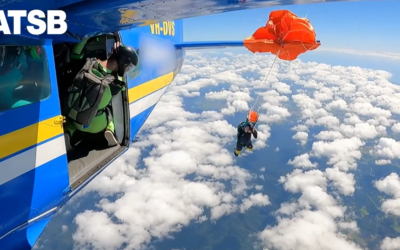Insight into near-death experiences uncovered by scientific study of dying brains | US News

“Exciting” new research could shed light on what happens when we die, according to scientists.
The new study may help explain accounts from individuals who have had near-death experiences.
Researchers from the University of Michigan looked at four patients who had died from cardiac arrest in hospital while they were being monitored using EEG recordings – tests which measured electrical activity in the brain.
The four patients were on life support machines and were comatose and unresponsive.
Scientists analysed the patients before and after life support machines were switched off.
Doctors said they were beyond medical help and with the consent of their families, they were removed from the machines.
What did the scientists find?
As doctors removed the ventilators, they found two of the patients showed signs of an increased heart rate and a surge of gamma wave activity – which is the fastest brain activity associated with consciousness.
These two patients had previously had seizures but no seizures were reported during the hour before their deaths.
The activity was located in the “hot zone” of neural correlates – brain activity that corresponds with and is necessary to produce a particular experience – of consciousness in the brain.
This is the junction between the temporal, parietal and occipital lobes in the back of the brain, an area which has been correlated with dreaming, visual hallucinations in epilepsy, and altered states of consciousness in other brain studies.
“Two of the four patients exhibited a rapid and marked surge of gamma power, surge of cross-frequency coupling of gamma waves with slower oscillations, and increased interhemispheric functional and directed connectivity in gamma bands,” the study said.
Read more on Sky News:
‘Godfather of AI’ issues warning
Scientists find out why we take selfies
The team found that the other two patients did not display similar increases in heart rate or brain activity.
Similar signatures of gamma activation were recorded in the dying brains of both animals and humans upon a loss of oxygen following cardiac arrest.
New way to understand consciousness at death
Dr Nusha Mihaylova, a clinical associate professor in the Department of Neurology at the University of Michigan, admitted the activity was not detected from everyone in the study.
She said: “We are unable to make correlations of the observed neural signatures of consciousness with a corresponding experience in the same patients in this study.”
But she added: “However, the observed findings are definitely exciting and provide a new framework for our understanding of covert consciousness in the dying humans.”
Larger studies may offer crucial data to determine whether these bursts of gamma activity are evidence of hidden consciousness even near death.
The findings are published in the journal Proceedings of the National Academy of Sciences
Recent Posts
- Douglas DC-3 90th Anniversary Broadcast Series Brings Global Community Together to Celebrate a Flying Legend
- Bombardier to send 6 Global 6500 to Canadian Air Force
- Daher Kodiak 900 aircraft receives Brazilian airworthiness certification
- Jim Richmond Backcountry Aviation Foundation announces Mustang flight as raffle prize
- Saudi Aviation Club Partners with Switchblade Flying Car Manufacturer to Further Saudi Vision 2030







Recent Comments